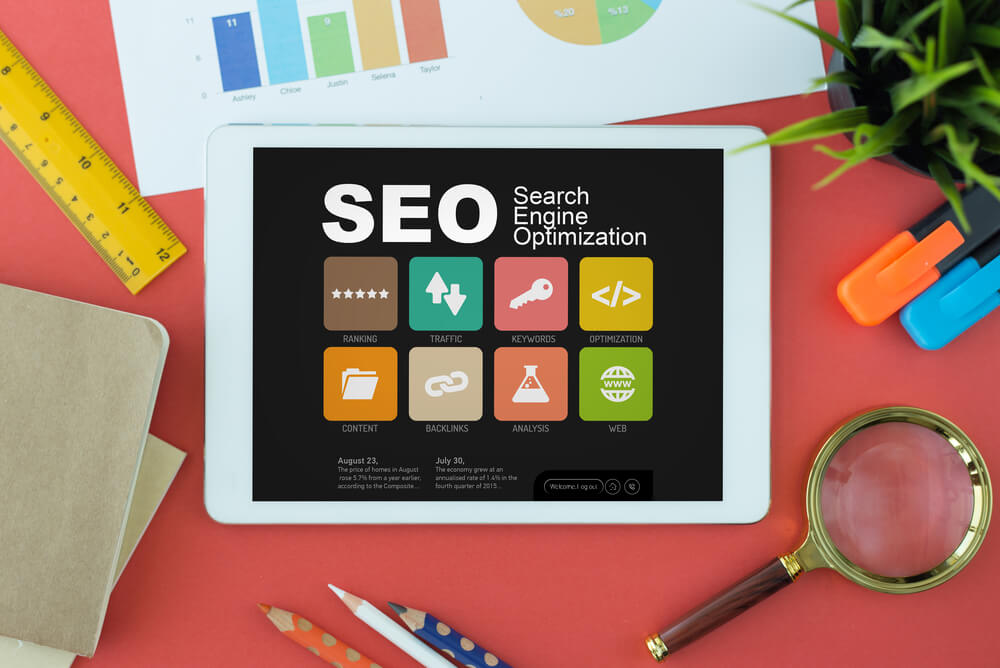
Optimizing Accounting SaaS Websites for More Organic Traffic
Organic traffic is crucial in accounting software-as-a-service (SaaS) marketing. As potential customers in the accounting industry use search engines to research reliable SaaS solutions, search engine optimization (SEO) becomes essential. A well-optimized website improves visibility and establishes credibility for accounting software providers.
This guide is about optimizing SaaS sites to improve organic traffic. It covers the following topics:
- Understanding SEO basics
- Website structure and user experience (UX)
- Content marketing
- On-page optimization
- Internal linking
- Social proof and testimonials
- Technical SEO
- Tracking and analysis
Find out how an experienced SaaS marketing agency improves organic traffic for a SaaS company and learn about the challenges of SaaS marketing. Let’s go!
Want to know how we help SaaS businesses stand out from the crowd? Watch this video to learn how DAP makes it happen!
Understand SEO Basics for SaaS
Mastering SaaS SEO basics in the accounting SaaS sector is crucial for online visibility. Part of SEO is keyword research tailored to industry-specific terms, allowing you to use those keywords in a way that aligns with accounting professionals' unique needs and queries.
A well-structured and navigable website with high-quality, informative content caters to the user experience and enhances search engine rankings. Given the technical nature of accounting software, optimizing for mobile responsiveness and fast page loading times is vital, as both users and search engines favor swift, accessible platforms.
Establishing backlinks from authoritative sources within the accounting and finance domain supports the credibility of the SaaS website, contributing to higher search engine rankings and increased organic traffic. A SaaS marketing agency can help make your website soar. Let us start with keyword research, on-page SEO, user intent, and SEO basics for SaaS website optimization.
1. Conducting Keyword Research
Effective keyword research starts with understanding specific terms and phrases that resonate with accounting professionals. Tailoring keywords to reflect user intent—whether they search for accounting software reviews, tutorials, or solution comparisons—ensures the content aligns with users' needs.
2. Ensuring On-Page SEO
On-page SEO is about making the website's content search engine-friendly. This involves strategically placing chosen keywords in page titles, meta descriptions, headers, and throughout the content. Using these keywords naturally boosts search engine rankings and enhances the user experience by delivering relevant and easily digestible information.
3. Understanding User Intent
User intent lies at the core of effective SEO for SaaS in accounting. Understanding why users conduct specific searches enables SaaS providers to create content that attracts visitors and addresses their needs. By aligning SEO efforts with user intent, SaaS websites establish themselves as authoritative resources, improving rankings and driving valuable organic traffic.
Update Website Structure and UX

A well-structured website is essential for providing a seamless UX, increasing customer retention, and enhancing search engine rankings. A clear and intuitive website architecture makes finding relevant information easier, reducing bounce rates and encouraging prolonged engagement.
Search engines favor well-organized websites as they can easily crawl and index content, positively influencing rankings. By prioritizing a user-centric design, SaaS providers can simultaneously cultivate positive UX and promote their online visibility.
Consider these techniques used by SaaS marketing agencies to enhance the website structure and UX for SaaS websites.
- Streamline navigation by organizing content logically and ensuring a clear menu structure. Use descriptive labels for navigation and implement a breadcrumb trail to help users understand their location within the website.
- Optimize site speed by compressing images and using the appropriate file formats. Minimize HTTP requests by consolidating CSS and JavaScript files. Leverage browser caching to store static resources locally.
- Promote mobile responsiveness by adopting a responsive design that adapts seamlessly to various screen sizes and devices. Optimize font sizes, button dimensions, and spacing, and test the website on a different device.
- Design a clean, visually appealing interface with consistent color schemes and typography. Use intuitive icons and graphics, and limit the use of pop-ups.
- Clearly define and highlight key calls-to-action (CTAs) throughout the website. Use compelling, action-oriented language and place CTAs strategically on each page to guide users toward desired actions.
- Streamline forms by including only essential fields, reducing friction for users. Use clear labels, provide helpful hints, and implement auto-fill options to enhance user experience.
- Ensure the website is accessible to disabled users by adhering to accessibility standards (WCAG). Use descriptive alt text for images, provide keyboard navigation options, and ensure proper color contrast.
By implementing these tips, SaaS providers can create a website that captivates users with an intuitive interface and optimizes navigation, speed, and responsiveness for a positive overall experience.
Create Compelling Content for Accountants
High-quality, informative content is necessary for professionals seeking accounting solutions. As a specialized field, accountants often search for critical information that addresses their specific challenges and needs.
Compelling content establishes a SaaS provider as an authoritative resource and builds trust among potential users, showcasing the provider's expertise in accounting. SaaS providers can attract and engage their target audience by offering valuable insights, educational resources, and practical solutions.
Various types of content are available for accountants looking for SaaS products or services. Here are some of them:
- Blog posts. Craft regular blog posts addressing common accounting challenges, industry trends, and best practices. Provide practical tips, insights, and actionable advice to showcase expertise and engage the audience.
- White papers. Develop in-depth white papers that delve into complex accounting topics or explore emerging trends. Offer comprehensive analyses, research findings, and practical applications of accounting methodologies.
- Case studies. Create case studies highlighting real-world examples of how accounting professionals have benefited from the SaaS solution. Showcase clients' specific challenges, the implemented solutions, and the positive outcomes achieved.
- Educational videos. Produce educational videos explaining complex accounting concepts, software features, or industry updates. Utilize visual aids, animations, and demonstrations to enhance understanding and engagement.
- Webinars and live Q&A sessions. Conduct webinars addressing current accounting issues, software updates, and industry insights. Host live Q&A sessions to interact directly with the audience. Promote these live events through various channels to attract a broad audience.
- Infographics. Design visually appealing infographics to convey complex accounting information. Illustrate critical concepts, statistics, or step-by-step processes.
- Ebooks. Compile comprehensive ebooks that serve as guides on accounting best practices, software usage, or industry regulations. Offer these as downloadable resources in exchange for user information, contributing to lead generation.
By diversifying content types, SaaS providers can cater to varied preferences within their target audience, establish authority, and drive traffic through valuable and engaging materials.
Conduct On-Page Optimization

On-page optimization refers to fine-tuning and enhancing various elements within a website or application to improve visibility and performance on search engines. For SaaS companies, on-page optimization ensures that their online platforms are easily discoverable by potential customers searching for relevant solutions.
Effective on-page optimization involves optimizing keywords, meta tags, content, and the user experience, ultimately driving organic traffic and fostering a competitive online presence for SaaS businesses. Let us look at these top on-page optimization strategies.
- Craft compelling meta titles and descriptions for each page, incorporating relevant accounting keywords. Ensure meta tags accurately reflect the content on the page.
- Use header tags (H1, H2, H3, etc.) to structure content hierarchically, making it more readable for users and search engines. Include target keywords in header tags.
- Develop rich, informative content using accounting-specific keywords and phrases to enhance search engine visibility. Create in-depth articles, use a natural and user-friendly tone, and avoid keyword stuffing while maintaining relevance.
- Place a clear and prominent CTA on each page, guiding users toward a trial or demo of the accounting software. Use persuasive language in CTAs and ensure CTAs stand out visually and are strategically placed within the content.
- Implement internal links to guide users to relevant pages within the website, improving overall navigation. Use descriptive anchor text for internal links.
- Optimize images using descriptive file names and alt text that include relevant keywords. Compress images to improve page loading times, improving user experience.
- Ensure the website is responsive to various devices, providing a seamless experience for users on desktops, tablets, and mobile devices.
- Implement schema markup to provide search engines additional context about the page's content. Use schema markup for specific accounting-related elements, such as reviews, ratings, or pricing information.
- Showcase user reviews and testimonials on relevant pages to build trust and credibility.
These on-page optimization tactics help marketers create a website that aligns with accounting professional needs and guides them toward valuable actions.
Build a Strong Internal Linking Structure
A robust internal linking structure helps enhance a website's visibility and search engine rankings. By strategically linking relevant pages within a site, you ensure search engines can understand the hierarchy and relationships between different content.
This interconnected web of links facilitates the flow of authority and relevance throughout the website, improving indexing and crawling efficiency. A well-thought-out internal linking strategy assists search engines in discovering and ranking pages and enhances the user experience, fostering longer engagement on the site.
Here are some insights on using anchor text effectively and linking to relevant content within the SaaS website.
- Use anchor text that is descriptive and relevant to the linked content. Incorporate keywords naturally into the anchor text.
- Avoid generic phrases such as "click here" or "read more" as anchor text. Opt for anchor text that provides a concise preview of the linked content.
- Ensure that the internal links lead to content relevant to the topic discussed.
- Distribute internal links throughout the content naturally, avoiding excessive clustering or forced placement.
- Designate hub pages or pillar content as central points for specific topics or themes.
- Link to these hub pages from various related articles, creating a content hub on a particular subject.
Leverage Social Proof and Testimonials

Leveraging social proof, such as client testimonials and case studies, is a powerful strategy to promote credibility and attract organic visitors to a website. Testimonials are authentic endorsements from satisfied clients, instilling trust and confidence in potential customers.
Case studies provide in-depth insights into clients' real-world success stories, showcasing the product or service's practical applications and tangible benefits. By prominently featuring success stories, businesses enhance their online reputation and develop compelling narratives that resonate with prospective clients.
These are best practices on how to leverage social proof and testimonials.
- Display testimonials highlighting different use cases, industries, or customer personas.
- Include quantifiable metrics and tangible results in testimonials. Specific data adds credibility and demonstrates real value, whether it's increased efficiency percentages, cost savings, or revenue growth.
- Feature well-known brands or industry influencers by prominently displaying their testimonials. Associating your product with reputable names enhances trust and validates the solution in the eyes of potential customers.
- Enhance the visual appeal of testimonials by incorporating multimedia elements. Video testimonials, in particular, can be compelling, providing a human touch and allowing potential customers to connect more personally with the experiences of others.
- Integrate social proof strategically across the website and marketing materials. Weaving testimonials and social proof throughout the customer journey reinforces credibility and positively influences purchasing decisions.
Consider Technical SEO for SaaS Websites
Technical SEO is optimizing SaaS websites to ensure search engine crawlers can find, index, and retrieve the site for a query. It involves several strategies, including website safety. A secure socket layer (SSL) is essential to establish a secure connection, instill user trust, and positively affect rankings.
Maintaining clean and well-structured code also ensures that search engines can easily crawl and index the website, enhancing its overall visibility. Including a sitemap provides search engines with a roadmap to navigate and understand the website's structure, aiding in more effective indexing.
Regular technical audits are critical to identify and rectify broken links, site speed issues, or mobile responsiveness issues, ensuring the website remains in peak condition for users and search engines. This proactive approach resolves potential technical hurdles and contributes to sustained SaaS SEO performance and a positive user experience.
Track SEO Performance and Adjust Strategy

Encouraging an iterative approach to SEO is essential for maintaining and enhancing a SaaS website's online presence. Regularly tracking key performance indicators, such as organic traffic, keyword rankings, and conversion rates, provides insights into the effectiveness of current SEO tactics.
Analyzing performance data allows businesses to identify strengths and weaknesses, enabling informed adjustments to their SEO strategy. By embracing a dynamic and responsive approach, SaaS providers can adapt to evolving search algorithms, industry trends, and user behaviors.
Here are the key performance indicators (KPIs) for SaaS website optimization.
- Organic traffic. Monitor the overall increase in organic traffic to assess the effectiveness of SEO efforts. Analyze the number of visitors who reach the website through search engine results, focusing on the quantity and quality of traffic.
- Keyword rankings. Track the ranking positions of targeted keywords on search engine results pages (SERPs). Evaluate changes in keyword rankings to gauge the impact of optimization efforts on specific search queries.
- Conversion rates. Measure the conversion rates of organic traffic, assessing how effectively visitors are completing desired actions, such as signing up for a trial or making a purchase. Correlate changes in conversion rates with shifts in SEO strategies to understand the impact on user behavior.
- Bounce rate and dwell time. Monitor the bounce rate to assess the percentage of visitors who leave the website after viewing only one page. Track dwell time, which measures how long users spend on the site, indicating visitors' engagement level.
- Backlink profile. Evaluate the quality and quantity of backlinks to the website, assessing the overall strength of the site's link profile. Monitor backlink changes to identify opportunities for link-building strategies or potential issues impacting SEO.
Tools for Monitoring Organic Traffic Growth
The following are valuable tools for monitoring organic traffic for SaaS websites. These tools come with SEO performance analysis and monitoring features that marketers can use to optimize their SaaS sites.
- Google Analytics tracks website traffic, user behavior, and conversion metrics. Explore the "Acquisition" section to gain insights into organic search performance.
- Google Search Console monitors keyword performance, submits sitemaps, and receives alerts about potential issues affecting the website's visibility in search results.
By regularly monitoring these key performance indicators and leveraging tools such as Google Analytics and Google Search Console, SaaS businesses can gain valuable insights into their SEO performance, make data-driven decisions, and refine their strategies for continued growth.
Summing Up
Optimizing an accounting SaaS website for more organic traffic involves strategic steps such as implementing technical SEO elements, diverse content, and regular tracking of KPIs.
These optimizations enhance online visibility and contribute to sustained organic growth and create a strong foundation for the accounting SaaS website's success.
Could optimizing your accounting SaaS website be the turning point for your business? Find out by contacting an expert SaaS marketing agency. Call Digital Authority Partners and learn how your SaaS business can benefit from higher organic traffic today.
Want To Meet Our Expert Team?
Book a meeting directly here




